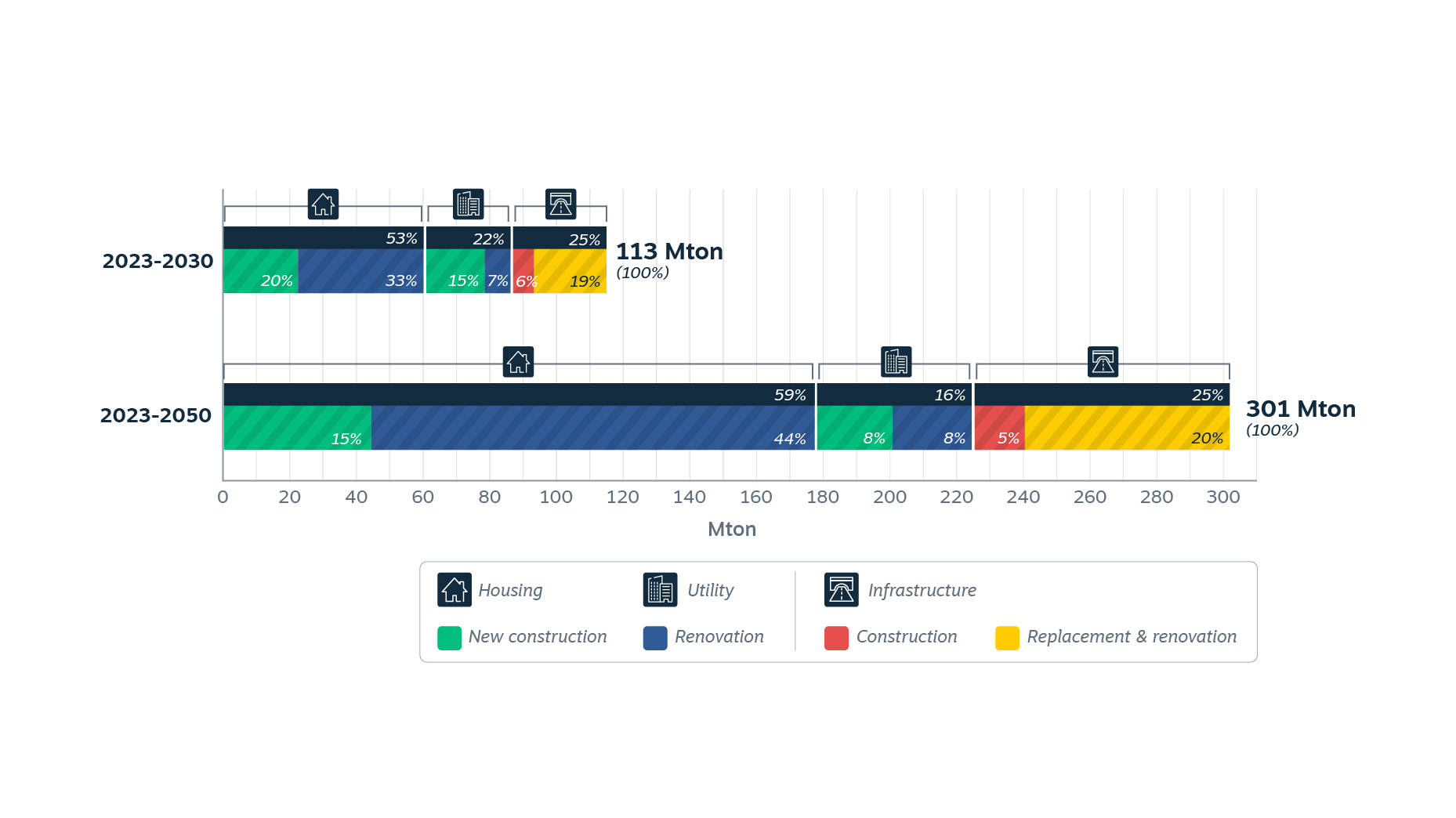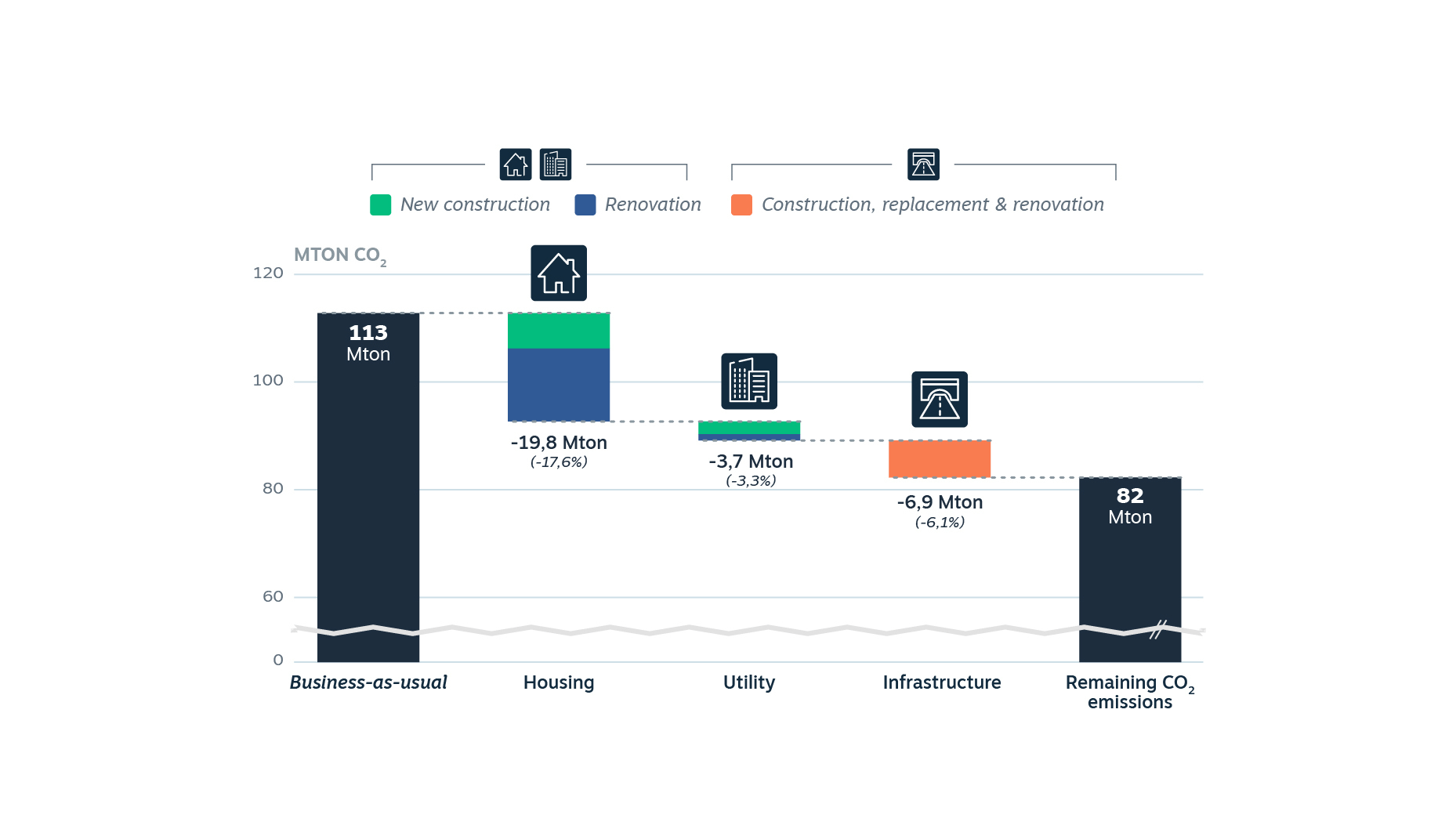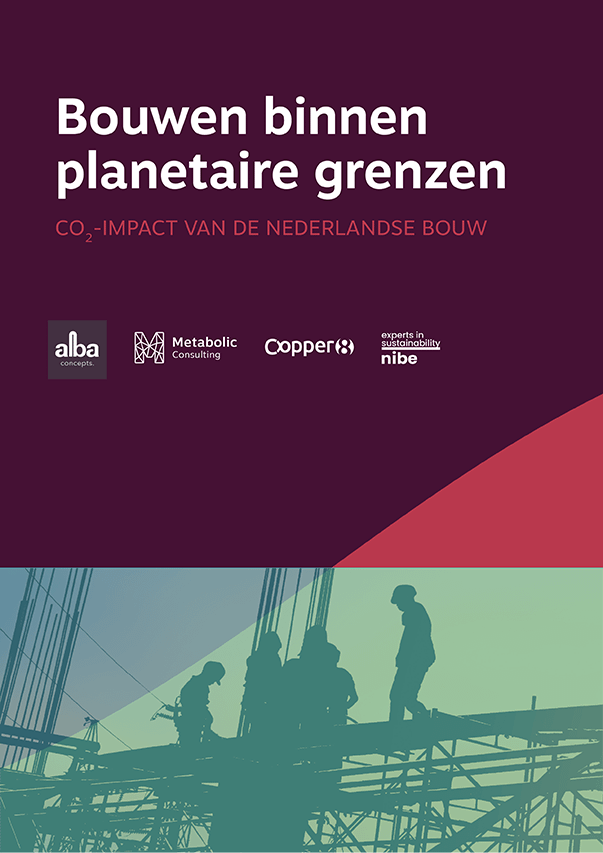Material consumption of the Dutch Construction Sector - a series of research on building within planetary boundaries
CO2 and environmental impact of the Dutch housing, utility and infrastructure construction sector
The Netherlands faces a substantial construction challenge in the next eight years. Under the current building practices, the entire Dutch construction (housing, utilities and infrastructure) sector will exceed its allocated 1.5°C CO2-budget by 2026. Immediate measures are needed to reduce the sector’s CO2-impact. In this research, we showcase the overarching reduction potential of different circular strategies within the three major construction sectors (housing, utility building and infrastructure).
- Client: Transitie team Circulair Bouweconomie, City Deal Circulair Bouwen
- Partner: Copper8, NIBE, Alba Concepts
- Date: 13th of March 2024
The Netherlands faces a substantial construction challenge in the next 8 years. We are constructing 1 million new homes, and the replacements or renovation of about 8 million homes and 1 million utility buildings. This endeavor also includes the renovation and reconstruction of existing infrastructure, spanning over 300 bridges and viaducts. In an effort to curb severe climate change, a global CO2 budget has established the maximum allowable emissions.
The contribution of Dutch construction to maintaining global warming within a 1.5°C increase is left with a remaining budget of 47 million tonnes (Mton) of CO2 starting from January 2023. With current construction methods, projected total CO2 emissions will reach 116 Mton by 2030. This indicates that, if these projects proceed as currently planned, the Dutch construction sector will deplete its allocated CO2 budget by 2026.
The conflicting ambitions of building more to meet the substantial housing demand and reducing impact to align with the Paris Agreement serve as the starting point for this series of research. Over the year, we have delivered several reports analyzing the material demand for the housing sector, the infrastructure sector, and utility buildings. This resulted in a comprehensive impact measurement of the construction sector up until 2035. To reduce CO2 emissions, we have established seven circular strategies to decrease material consumption and impact in the short term. Additionally, we have outlined a future perspective on the built environment, listing actions required by various stakeholders to implement these circular strategies. This research provides the built environment sector with an actionable plan to transition the sector by building within planetary boundaries.
Transitioning to a circular construction economy is crucial for reducing the construction industry’s climate impact. Four key changes are recommended:
- Focus on lifespan extension and circular renovation. Extend the lifespan of existing infrastructure and aim to reduce CO2 impact at renovations of residential and commercial buildings.
- Exploring alternatives to new construction. especially by making better use of the existing housing stock, questioning the construction of new utility buildings and new infrastructure.
- Changing the way we construct. including making other design choices (passive construction of homes and offices) and other material choices in both housing, utility and infrastructure
- Accelerating sustainability in the building materials industry. With an extra focus on the accelerated decarbonization of the Dutch building materials industry (including asphalt, bricks, baked clinkers and insulation materials) and decarbonization of concrete.






Director of Sustainable Cities & Regions
ANY QUESTIONS?
For more information about this project, please get in touch.






